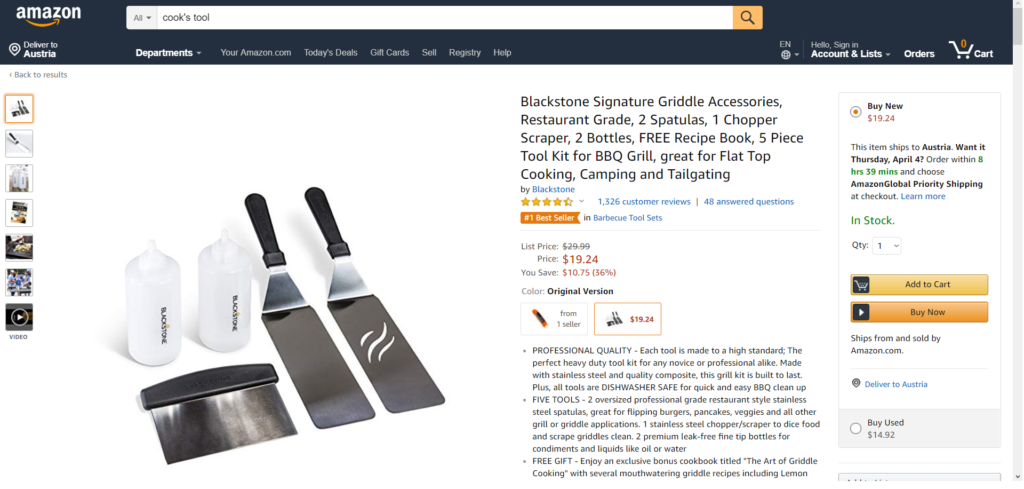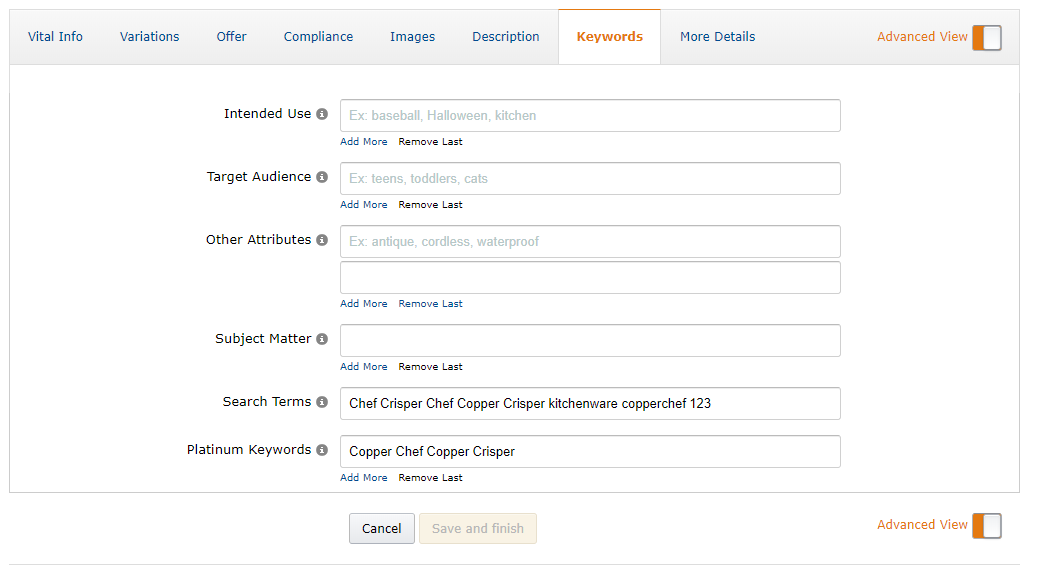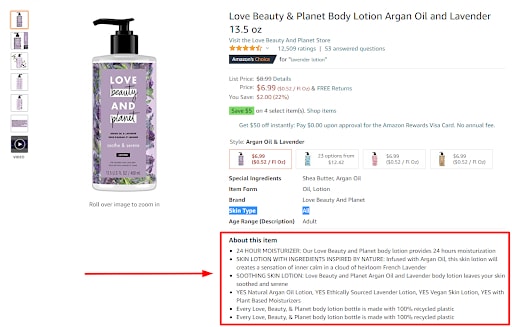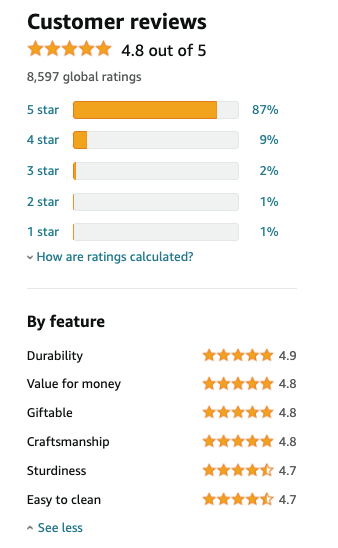Too many times, when we consider SEO, we only consider Google. And of course, you would like excellent rankings in the search engines.
But your site is not the only website on the internet where you are potentially selling your product. If you have a product listing on Amazon, you would like to have it seen by customers just as you would like your site to appear on the first search engine results page (SERP) for your industry keywords.
Doing Amazon SEO wrong, as with traditional SEO, will mean less traffic and fewer sales.
It’s important to note that Amazon’s algorithm is distinct from any Google or Bing algorithm in how it brings up results. In a nutshell, there are significantly fewer ranking signals or factors than with traditional SEO, which some contend involves up to 200 factors (though others contest this).
You might think that this makes ranking in Amazon easier, but it’s not that simple. If you’re trying to analyze Amazon SEO from a web-SEO standpoint, you’re going to have a hard time. That’s because Amazon is primarily a buying platform, first and foremost.
A multi-channel e-commerce strategy is an effective e-commerce strategy. Download our free guide to Google Shopping and start spreading your brand today!
Table of Contents
ToggleAn Introduction to Amazon’s Search Algorithm
Amazon’s search algorithm is known as A9, simply because the same-named company that provides SEO for the same-named company, a subsidiary of Amazon, is A9. In their own words:
“We manage search and advertising technologies that are scalable, highly available, and cross-platform for our parent company, Amazon, and other clients.”
Recognize that Amazon, being the world’s largest ecommerce website, is only interested in one thing: its bottom line, and so getting rid of its products as cheaply as possible to its millions of consumers.
Whereas individuals conduct all sorts of various searches on Google, many of them informational searches, virtually every Amazon search is a transactional search. That’s why its algorithm really boils down to only a few things; Relevance and Performance.
If you rank your Amazon product page for these two, very important ranking variables, you’ll be converting and selling more on the site. Both relevance and performance have further sub-categories that can be distinguished, so let’s explore each of them further.
Relevance-Related Amazon Ranking Variables

Better news: You can affect these ranking variables directly through strategic keyword use in the following parts of your Amazon pages.
Your Product’s Title
Probably the most important element of Amazon SEO, as far as relevance is concerned, is the product-title ranking factor. You’ll want to put the most relevant keywords for your product in the title.
The top 3 Amazon results for “mortar and pestle” all have those words in the product name. Here are some tips to optimize your Amazon product name:

- Include your brand name
- Provide a clear description of what your product does
- Say a particular ingredient or basic material
- Define the color of your product
- Describe the size of your product
Make reference to the quantity of your product (if need be). As with the case of white hat SEO in the real world, don’t keyword-stuff in your title because that will hurt your rankings on Amazon. If you keyword-stuff, you can risk writing a title that sounds unnatural, and that will appear spammy and hurt your click-through rate.
Your Seller Name
Think about how your seller name affects your relevance as a ranking factor. Some marketers have noted that they can make specific products rank higher in Amazon’s organic search if they put the primary keywords for the product inside the seller’s name.

Let’s consider an example. If you type “American flag ties for men” into Amazon, the top result is from a seller named “Man of Men.” The inclusion of the word “men” in the seller name might well be assisting them with that ranking. (If you leave out “for men” from the search term, you get varying results). So keep an eye on your seller name to squeeze out additional profits in Amazon’s SERPs.
Your Amazon Backend Keywords

Backend keywords are really “hidden” keywords that will only be utilized in your Amazon Seller Account’s backend area. Their purpose is to inform Amazon’s algorithm that a particular product listing is going after a particular keyword on the website.
If you’re looking for an analogy to search engine SEO here, think of these backend keywords like the meta tags that tell Google what your webpage is about, which helps the search engine figure out when to show the page to people searching for specific information.
There are five spaces sellers can complete with their backend keywords. Each line has a 50-character space. If you exceed the space, your backend keyword will not be indexed by the site. There are five things to remember in order to effectively complete your Amazon backend keyword fields:
- Don’t repeat words
- Don’t use quotation marks as they’ll reduce your total character space
- Don’t use multiple variations of one word
- Commas are not taken into account
- Add spelling variations or synonyms
Your Brand Field
A product’s brand field always appears on the product page (directly above the title or headline) and links to different search results for other products from the same brand. When you list your products, be careful to spell your brand name just right.

Normal behavior for Amazon users is to look up a product by its brand name, so it’s essential to always use a correct one. If your item has multiple different brand names you might feasibly use, take assistance from a keyword tool to determine which of these is the highest searched for brand name and utilize that.
Your Product Description and Bullet Points
These go hand-in-hand. Both tell your customers more about your product, so this is your chance to be very detailed, as well as persuasive. Of course, you’ll need to include your most important keywords here, too.

For the description, work hard to make the copy readable, natural and convincing from a pure sales standpoint. Follow ecommerce landing page best practices. This will resonate with potential buyers beyond the SEO power you’ll get from including your keywords.
As for the bullet points, the same applies. Bullet points are quick and simple to scan through because they’re scannable, therefore your customers will be reading this section with a priority. Let your customers know the advantages of your product (not merely features) and present important details such as ingredients or measurements.
Fit your applicable keywords into these bullet points naturally, thereby adding value to every bit of information concerning your product. Peer-check your competitors and ensure that they’re not listing more comprehensive content than you.
Performance-Related Amazon Ranking Factors
Performance factors are slightly more challenging to put a finger on directly, as more variables beyond keywords become involved. Nonetheless, it’s important that you have a grasp of these, as well, for Amazon SEO optimization.
Your Product’s Price
It goes without saying (at least it ought to) that the amount you charge for your product has a big influence on your Amazon conversion rate and the number of units you sell on the site. If your price on Amazon is competitive relative to other places selling your product or products like yours, then your conversion rate should be boosted.
One thing that sometimes gets lost in this is your price relative to similar products within the same category on Amazon. If lots of similar products in the same category are priced lower than yours, then two things probably will occur:
- You won’t sell nearly as many as those comparable products
- Amazon’s algorithm will guess that your product probably won’t sell as many as the others
Long and short of it: Either way, you’ll have to endure a lower Amazon search rank if you’re charging too much compared to comparable products, so don’t price yourself out of the Amazon marketplace. Compare carefully what your rivals on the site and elsewhere are charging, and price accordingly and competitively.
If your price is higher, there needs to be a very good reason why (e.g., more and better reviews).
Your Amazon Conversion Rate
Closely tied to price, your product’s conversion rate is another very important performance metric in your search ranking. It’s going to be tough to figure out how your conversion rate stacks up with much certainty, though, since you don’t actually have access to Amazon’s analytics like you would with analytics on your own ecommerce website.

The best you can do for conversion statistics is to review Seller Central’s Detail Sales Page and Traffic under Business Reports and Reports. There, you’ll want to examine the Unit Session Percentage, which is basically the number of units purchased per visit. It’s as close as you’ll get to a pure conversion rate for your product page.
If your conversion rate is lackluster and you think your product can perform better, then it’s time to go back over some of the above relevance factors to determine if you can show up higher in Amazon searches and/or convince more folks to buy with improved product page copy.
Your Product Images
Products that have high-quality images consistently get a higher conversion rate, according to studies. The same applies to your Amazon product page.

Amazon itself suggests larger images in its Seller Central Product Image Guidelines, stating:
“Images should be 1,000 pixels or greater in height or width. This minimum size ensures the zoom function on the site. Zoom has been shown to drive sales. The smallest your file can be is 500 pixels on its longest side.“
Add high-quality pictures that comply with these rules, and assist your product listings not to be listed at the back of the search results, leading to poor conversion rates. And when your conversions improve as a result of such optimizations, then your Amazon search-results rankings are likely to be better.
Your Amazon Reviews

It’s safe to assume that online reviews – which 85% of consumers trust as much as word-of-mouth recommendations – are another performance-based metric that Amazon’s algorithm takes into account. Observe the connection in Amazon’s search results and products with lots of reviews. The products that are ranked highest for a more general keyword tend to have more reviews, and higher-rated reviews, than those further down the list.
This, we can see, means that having more reviews affects click-through rates and will result in increased sales, which affects overall product ranking on the site. Amazon, of course, has in recent years tightened up on false reviews to ensure greater integrity, so don’t attempt to manipulate the algorithm.
If you’d like to get more of your customers to leave reviews on your Amazon product page, simply send them follow-up reminder emails after a purchase, asking them to leave a review for what they just bought from you.
If your Amazon reviews are bad, look at what is frustrating people and try to fix the problems with your product. Following are more tips on how to obtain more and better Amazon reviews.
Eyes on the “Amazon’s Choice” Award
Successful Amazon SEO is really just understanding what Amazon’s algorithm requires of you as the seller, and that boils down to making Amazon’s buyers happy. There are a number of things that you can optimize on your product page, but they all come back to two things: relevance and performance.
If you’re optimizing for these bigger variables, you’ll eventually start seeing change in the right direction as it relates to your search ranks, conversion rate, and revenue. If you require help to get your products inside Amazon sponsored links, read WordStream’s article on Amazon advertising.












Rahul M.
B2B Service Provider